Join or Die
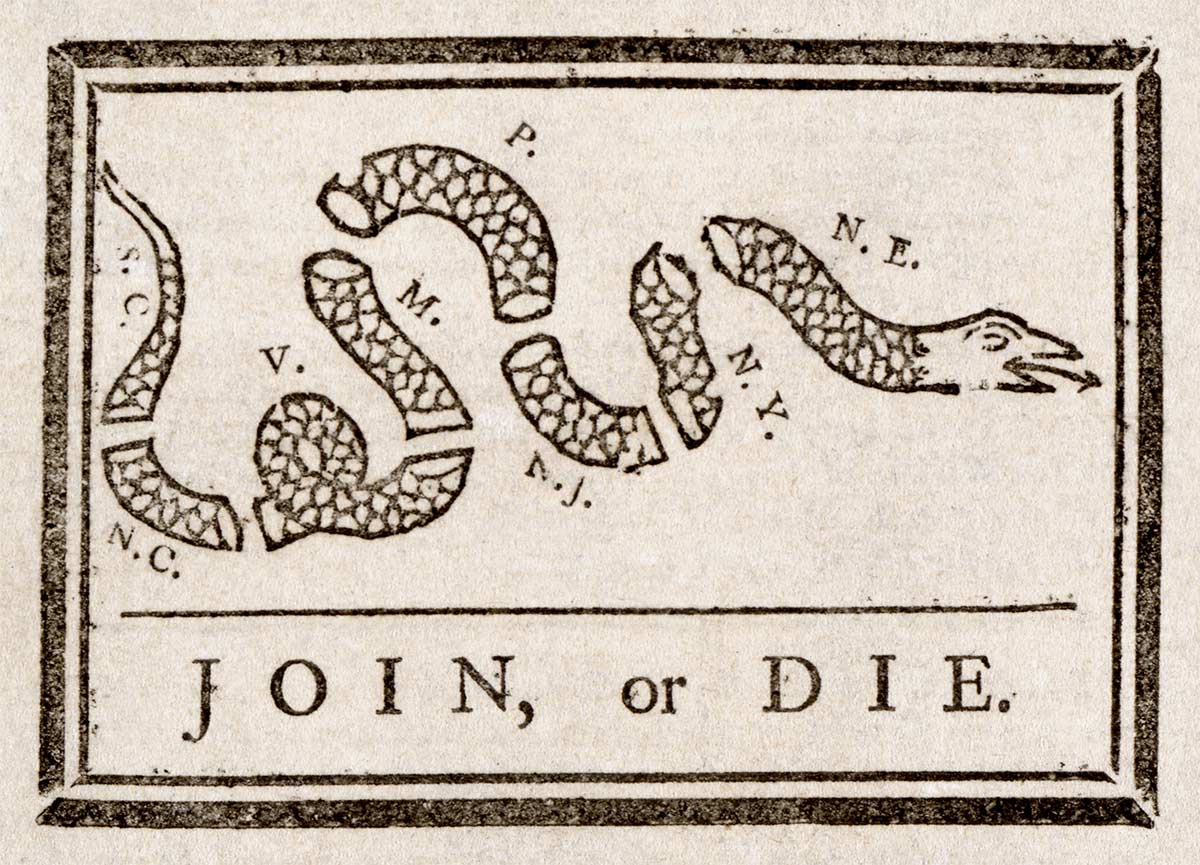
The "Join or Die" political cartoon is an important part in American history, created by Benjamin Franklin in 1754. It was the first political cartoon published in an American newspaper and was designed to rally the American colonies to unite against French and Native American forces during the French and Indian War.
The cartoon uses a segmented snake as a metaphor for the disunited states, each segment labeled with the initials of a colony. Its enduring message of unity and common cause resonates even today, underscoring its historical importance.
Organized Labor

This American political cartoon was first published in the Seattle Union Record in 1913. Maybe tastes have changed over the years, but this feels very on the nose, even by political cartoon standards!
The cartoon features a "shortsighted employer" who is trying in vain to stop the progress of organized labor. Considering that the United States still has a contentious relationship with unions, perhaps the illustrator was the one being shortsighted.
Do You Get It?
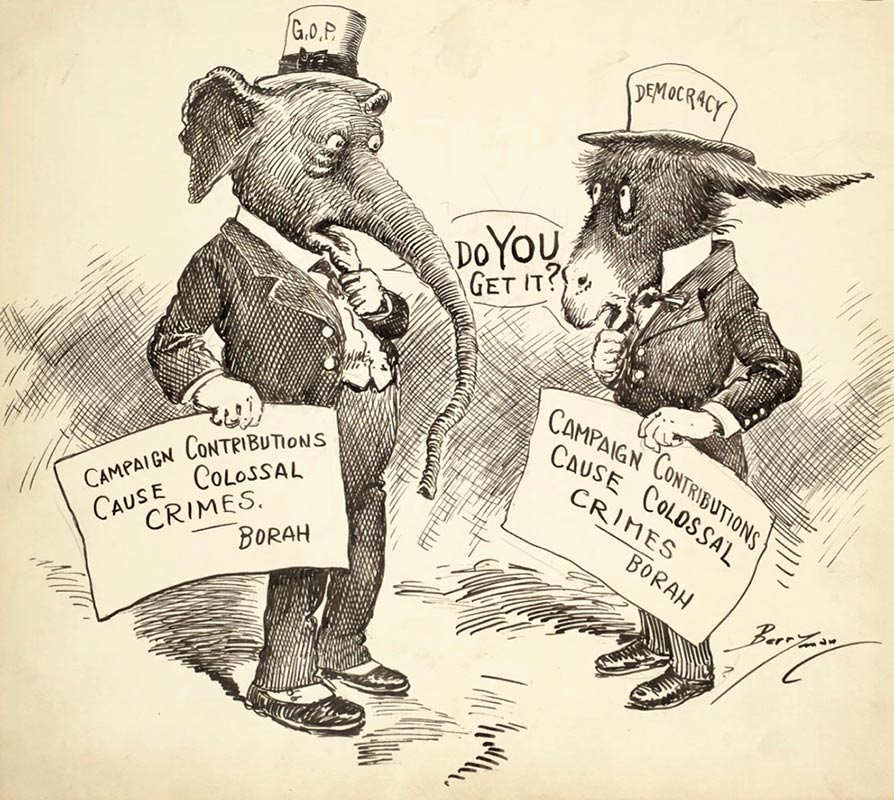
In 1924, Senator William Borah gave a speech to Congress about corruption in campaign contributions, which the Senate was then investigating. This cartoon, illustrated by Clifford Berryman, was a response to that speech.
In this cartoon, we see a GOP Elephant and a Democrat Donkey holding signs that say, "Campaign Contributions Cause Colossal Crimes" while asking the other if they get it. This illustrates the perceived hypocrisy of both parties, which were very interested in corruption when the other party did it but not so much when it was coming from their own party.
Two More Bright Spots on the Map

"Two More Bright Spots on the Map" by Harry Osborn, published in the Maryland Suffrage News on November 14, 1914, is a political cartoon that celebrates a significant milestone in the women's suffrage movement in the United States.
The cartoon marks the occasion of Montana and Nevada granting women the right to vote, symbolically represented as bright spots being painted on a map of the United States by Lady Justice.
The Rhodes Colossus
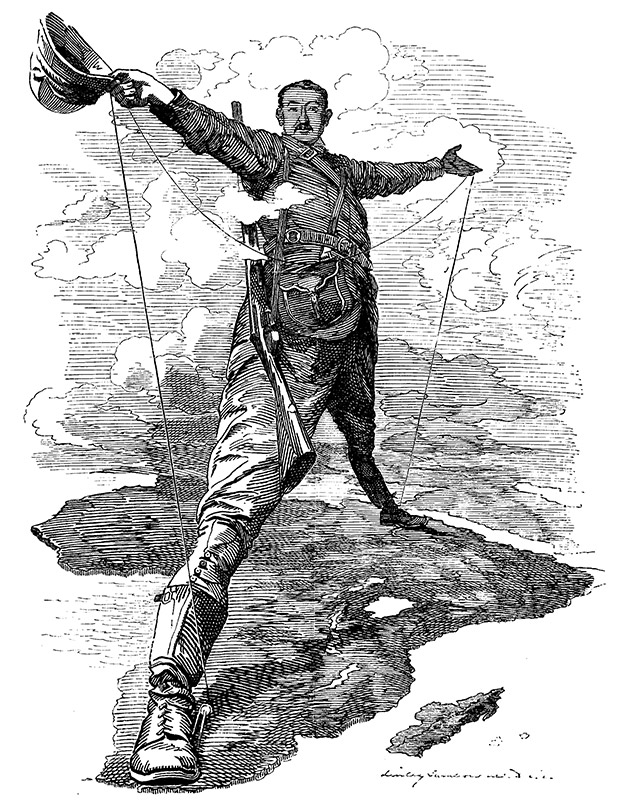
"The Rhodes Colossus" is a political cartoon by Edward Linley Sambourne, published in Punch magazine in 1892. The cartoon portrays British imperialist Cecil Rhodes as a giant straddling Africa from Cape Town to Cairo, reflecting his ambition to build a transcontinental railway.
The cartoon is significant as it visually encapsulates the era's imperialistic ambitions and the concept of 'The Scramble for Africa.' The image has endured and is often adapted to represent other forms of dominance and ambition, underlining its lasting impact on political discourse.
The Plum Pudding in Danger

"Plum Pudding in Danger" is a notable political cartoon by James Gillray, published in 1805. It symbolizes the tense geopolitical situation during the Napoleonic Wars. The cartoon depicts British Prime Minister William Pitt and Napoleon Bonaparte sitting at a table, carving a globe-shaped plum pudding, representing the world.
Each leader's slice signifies their imperial ambitions. The cartoon is significant as it vividly illustrates the rivalry between Britain and France and the power struggles of the era. It's a classic example of satire being used to comment on international politics.
Boss Tweed and the Tammany Ring

"Boss Tweed and the Tammany Ring" is a series of political cartoons by Thomas Nast, published in Harper's Weekly in the 1870s. These cartoons exposed the corruption of William "Boss" Tweed and his Tammany Hall political machine in New York City.
Nast's work significantly raised public awareness, leading to Tweed's eventual arrest and conviction. These cartoons' legacy is profound, as they highlighted the power of visual satire in journalism and its ability to influence public opinion and drive political change. They remain a landmark in the history of American political cartoons.
We Can Do It

"We Can Do It!" is a 1943 wartime poster created by J. Howard Miller for Westinghouse Electric. It was designed as part of the U.S. national campaign to recruit women into the workforce during World War II.
It features an image of a strong female worker, later known as "Rosie the Riveter," flexing her arm muscle. This iconic image has an immense legacy, as it became a symbol of female empowerment and gender equality. Even today, "We Can Do It!" continues to inspire and represent women's contributions to society.
The System

This political cartoon was published in Regeneración, an anarchist newspaper published by the Mexican Liberal Party in the early 1900s.
The cartoon portrays the then-president of Mexico, Porfirio Díaz, turning a lever that is crushing the liberties of the Mexican people: namely, justice, the constitution, the free press, suffrage, and financial integrity.
The Devil's Broth

"The Devil's Broth" is a political cartoon that emerged in response to the Oregon Compulsory Education Act of 1922. This contentious piece of legislation mandated that all children attend public schools, a move that was seen as an attack on private and religious education institutions.
The cartoon suggests that the law was an attempt to suppress minority religious practices and centralize control over education. It vividly captures the heated debate of the era, symbolizing the resistance against government overreach into educational matters and the preservation of religious freedom.
Anthracite Prices
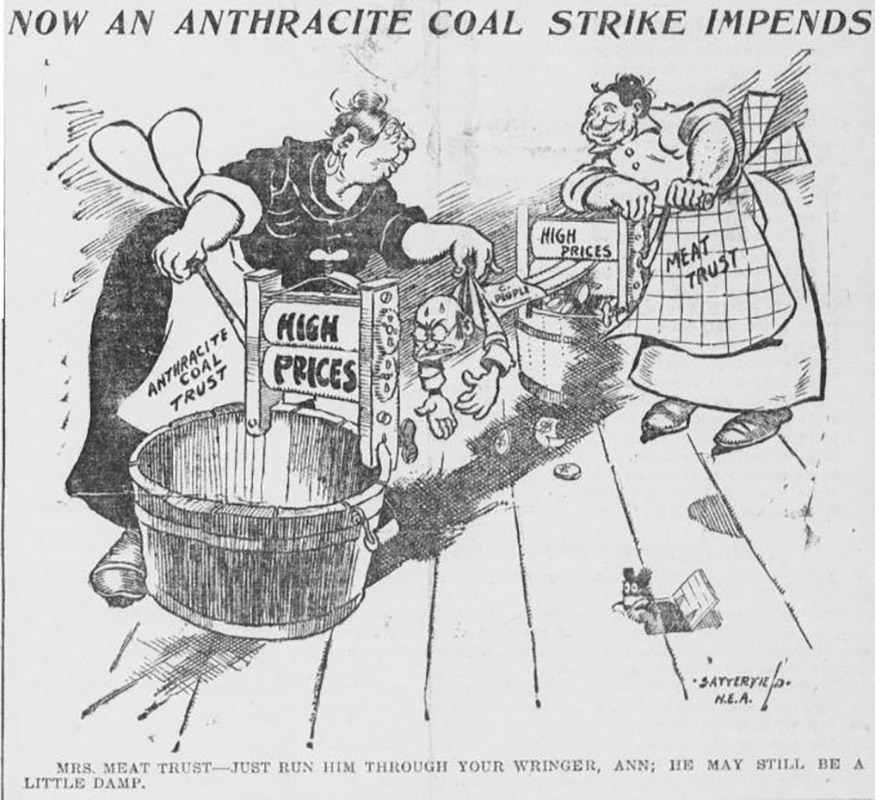
Some political cartoons are still understandable, even decades or centuries later. This particular cartoon, however, is not one of them. If you're confused about why common people are being put through the wringer by anthracite and meat trusts, you're in good company!
This cartoon is a reference to a strike by anthracite miners in the early 1900s. The strike threatened to cripple major American cities due to the impending cold weather of winter.
Child Labor Employer

Child labor laws were a contentious issue in the early 20th century in the United States. This political cartoon decided subtlety was unnecessary and simply portrayed businesses that hire children as a giant hand that's crushing kids.
The illustrator and publication date on this cartoon are a bit of a mystery. It's estimated that it was published sometime around 1912 and has been attributed to both Herbert Johnson and Lewis Hine and various points in history.
Help Him to Get Out
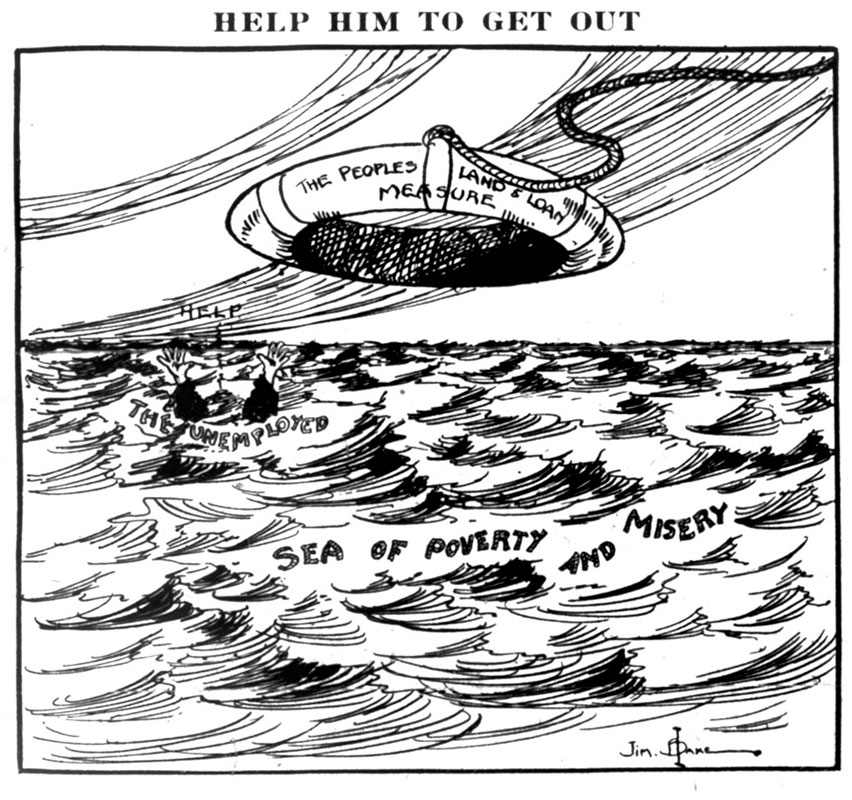
This political cartoon, illustrated by a staff cartoonist at the Oregon Labor Press in 1916, was created in support of the Peoples Land and Loan Measure, which supporters saw as a way to pull the unemployed out of poverty.
While the measure itself was never passed by voters, the cartoon has managed to survive all the way into the modern day.
Hyphenated Americans
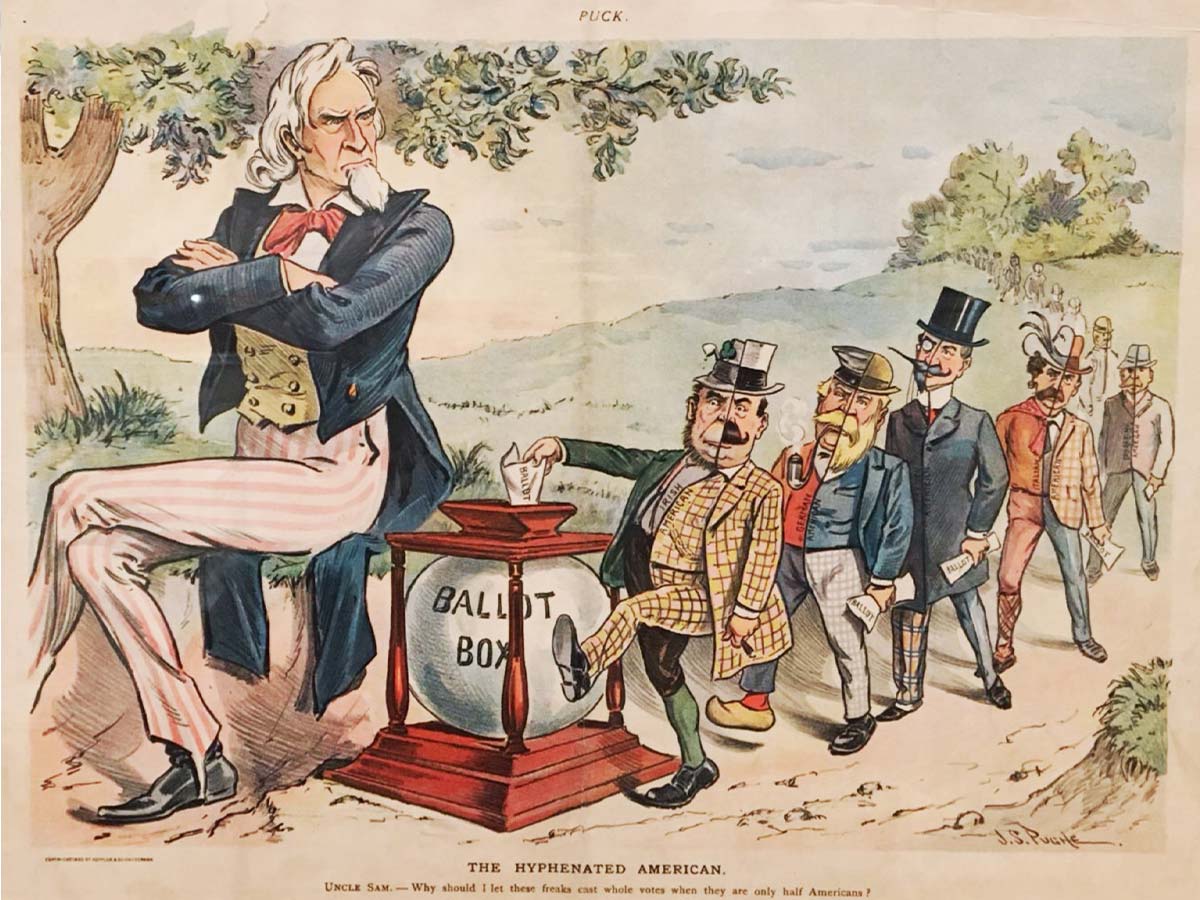
In the late 1800s/early 1900s, the idea of "hyphenated Americans" (Irish-American, Italian-American, etc.) was a subject of hot debate. While those opposed to hyphenated Americans supported naturalized citizens, they opposed these citizens having even the appearance of loyalty to their former nations.
This political cartoon, published in Puck magazine in 1899, shows Uncle Sam scowling as hyphenated Americans place their votes in the ballot box. The men are illustrated with a line down the middle, with one side dressed in the American style of the time while the other half is dressed in clothing from their home countries.
Senator Nelson Aldrich
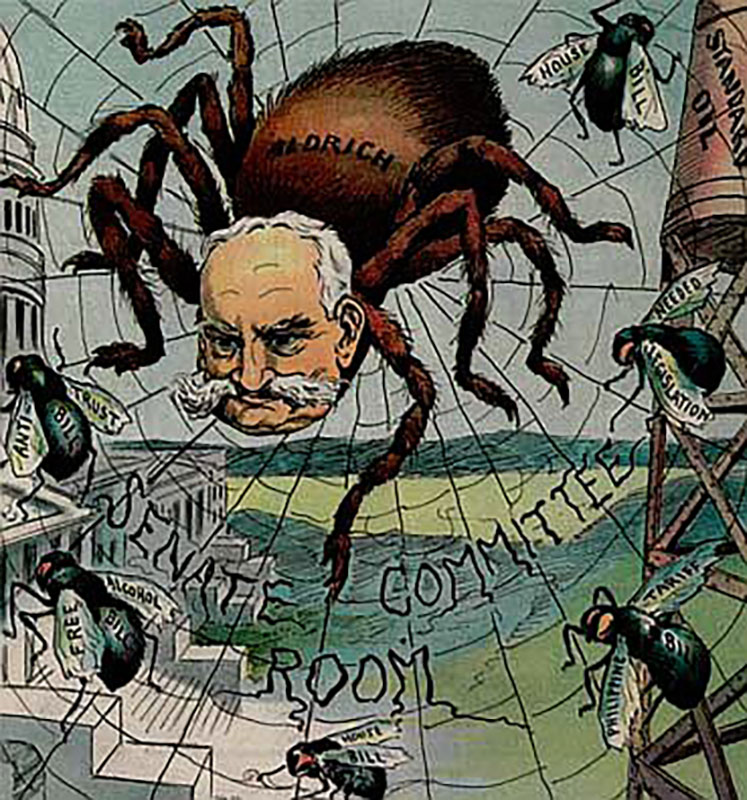
In 1906, Puck magazine published a striking political cartoon portraying Senator Nelson Aldrich as a spider, a vivid representation of public sentiment towards Aldrich's influential role in American politics and economics.
The cartoon captures Aldrich in the center of a web, symbolizing how he was viewed as ensnaring the U.S. economy and government policy within his influential reach, highlighting concerns over the intertwining of corporate power and politics during the Progressive Era.
Uncle Sam Returns Railroads
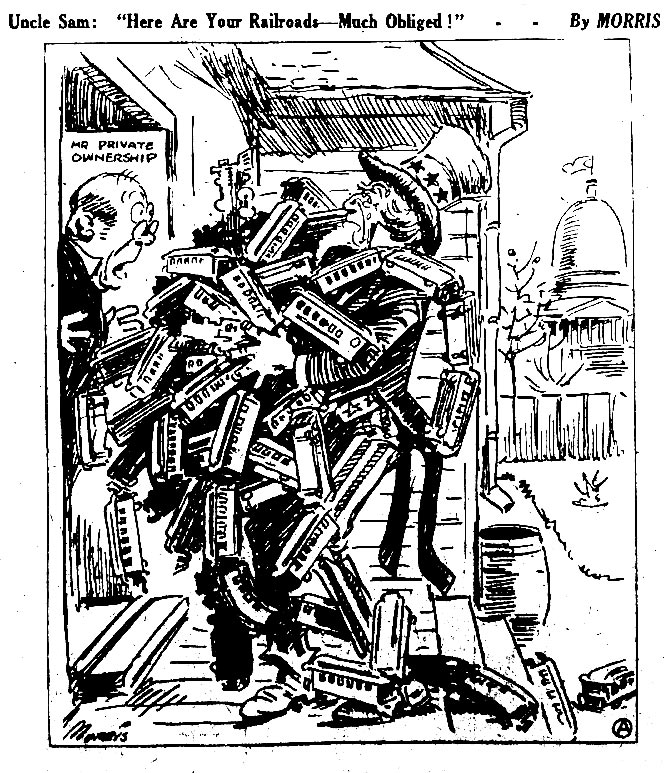
This political cartoon, titled "Uncle Sam: 'Here Are Your Railroads—Much Obliged!'" by William Charles Morris, depicts a scene where Uncle Sam, representing the U.S. government, is burdened with a large number of railroads. He is handing them back to a character labeled "Mr. Private Ownership." The image suggests the complexity and difficulties associated with the government's management of the railroads during this period.
This cartoon's context is rooted in the historical event of the U.S. government returning control of the railroads to private ownership after World War I. It reflects the challenges and perhaps the relief of the government in relinquishing this responsibility, as indicated by Uncle Sam's overloaded and somewhat exasperated expression.
Yellow Kids

This political cartoon by Leon Barritt depicts newspaper moguls Joseph Pulitzer (left) and William Randolph Hearst (right) as children building a structure labeled "WAR" with blocks. The caption on Pulitzer's gown satirically mimics his exaggerated accent, suggesting he is trying to maintain control over his domain.
The cartoon critiques their role in fomenting the Spanish-American War through sensationalist journalism, often referred to as "yellow journalism," highlighting the competitive and manipulative nature of their newspaper empires.
But Where is the Boat Going?
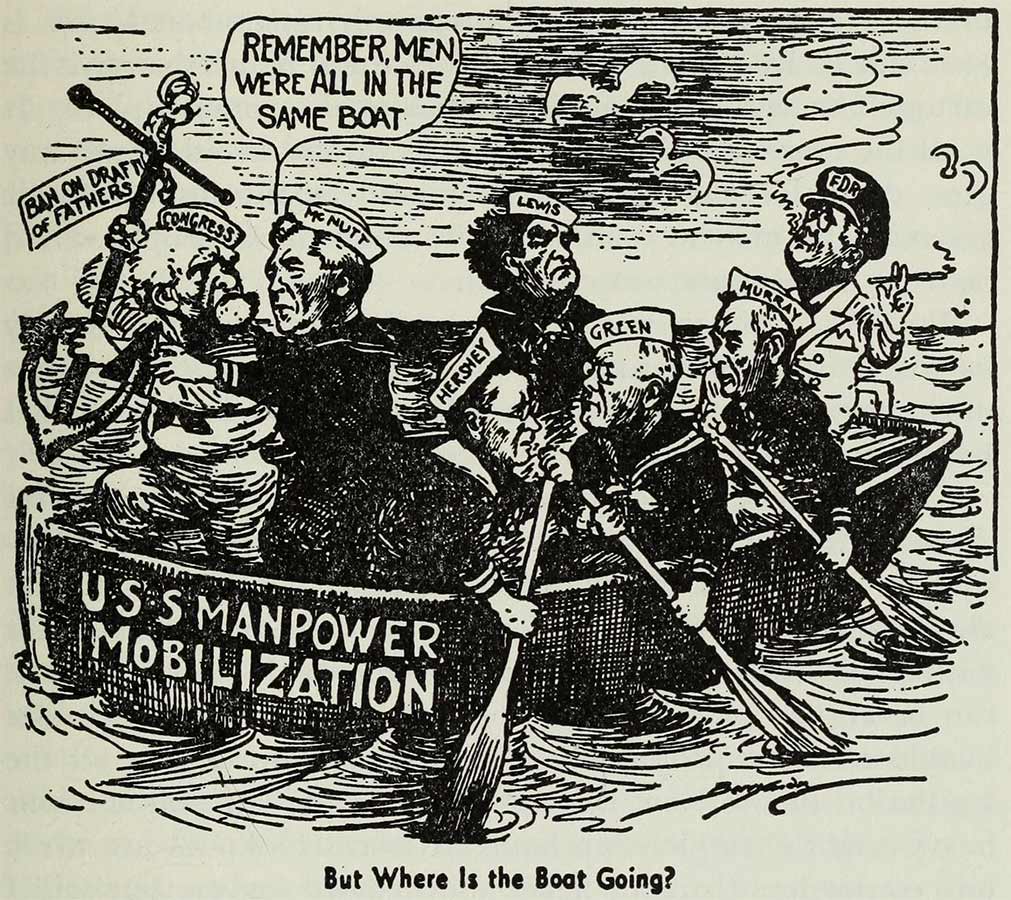
This political cartoon illustrates key figures in U.S. manpower mobilization during World War II rowing a boat labeled "U.S.S. Manpower Mobilization." Characters include Congress, McNutt (Paul V. McNutt, Chairman of the War Manpower Commission), and President Franklin D. Roosevelt (FDR) smoking a cigarette.
A figure labeled "Ban on Draft of Fathers" sits at the front, indicating a controversial issue of the time. The caption "Remember, men, we're all in the same boat" highlights shared responsibilities, while "But Where Is the Boat Going?" questions the direction and efficacy of their efforts, reflecting public uncertainty about the war mobilization strategy.
An Awful Blot

The cartoon critiques the widespread use of child labor in the US during the early 20th century. It portrays child labor as a national shame, affecting multiple states and requiring attention at the federal level. The elderly figure's posture suggests embarrassment or inability to address the issue effectively.
This cartoon likely aimed to raise awareness and provoke public outrage about child labor practices, supporting reform movements of the Progressive Era that sought to abolish or regulate child labor.
The "Brains"
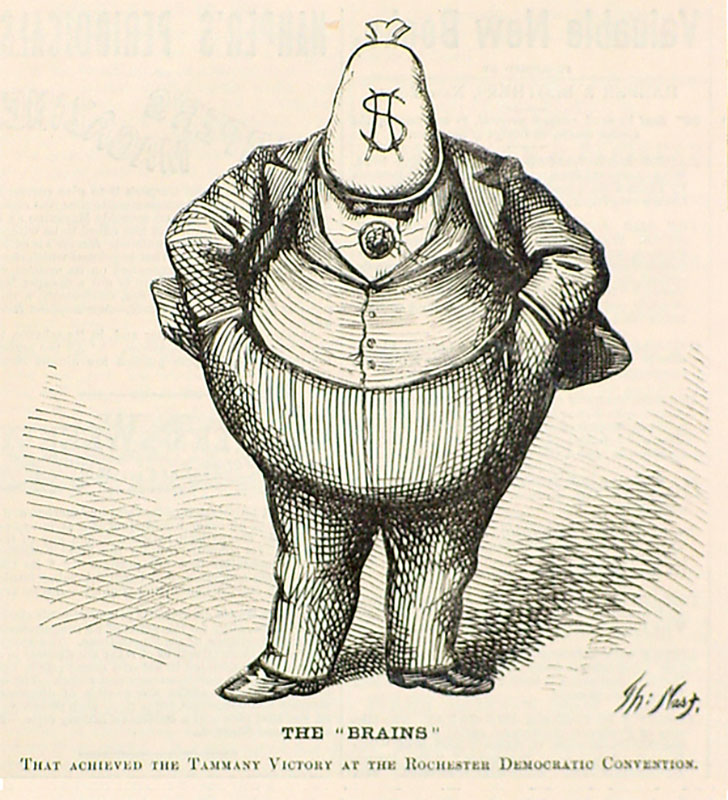
This political cartoon is a satirical commentary on the influence of money in politics, specifically on the Tammany Hall political machine and the Democratic Convention in Rochester. Tammany Hall was a powerful political organization in New York known for its corrupt practices and patronage system, which was at its peak around the turn of the 20th century.
During this time, there was growing criticism of political corruption and the outsized influence of wealth in American politics. It's a pointed critique of how money could "buy" political victories, undermining democratic processes.
Public School
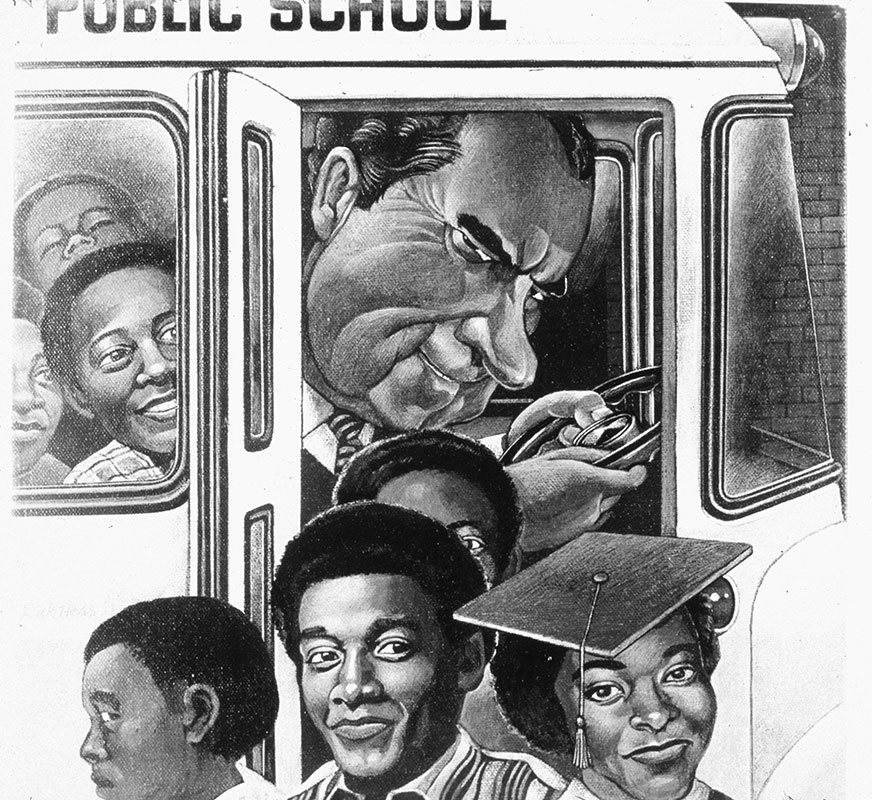
This political cartoon features a caricature of President Richard Nixon behind the wheel of a school bus labeled "Public School." The bus is filled with African American children, several of whom are visible through the windows. The cartoon appears to critique Nixon's stance or policies on education and civil rights, particularly regarding school desegregation and busing.
In the late 1960s and early 1970s, busing was a highly contentious issue in the United States. Nixon's administration had a complex stance on busing. While officially supporting desegregation, Nixon often opposed busing as a means to achieve it, reflecting the broader national debate and tension over the issue.
Armchair Strategist
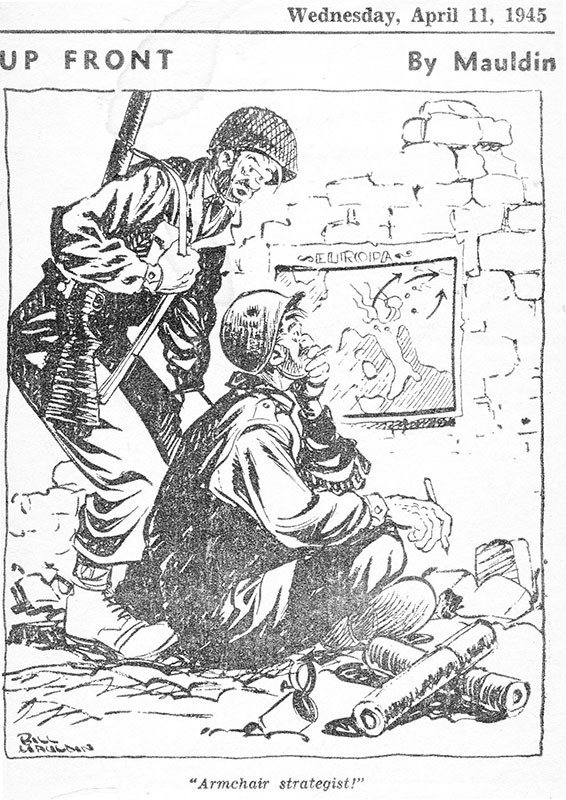
This political cartoon is by Bill Mauldin, a famous American cartoonist known for his work during World War II. The cartoon was published as part of Mauldin's "Up Front" series, which depicted the daily lives and experiences of American soldiers during the war.
Mauldin's cartoon critiques those who, from a safe distance, think they can effectively strategize and dictate military tactics without truly understanding the harsh realities of frontline combat.
Looks Easier

This political cartoon, created by Clifford Berryman and published on June 3, 1933, illustrates a debate on tax policy during the early 20th century in the United States. The cartoon was published during the Great Depression, a time when the government was exploring various methods to increase revenue and stimulate the economy.
This cartoon captures a critical moment in U.S. tax policy history, highlighting the ongoing debate between different approaches to taxation and their implications for government revenue and economic fairness.
Crown Prince
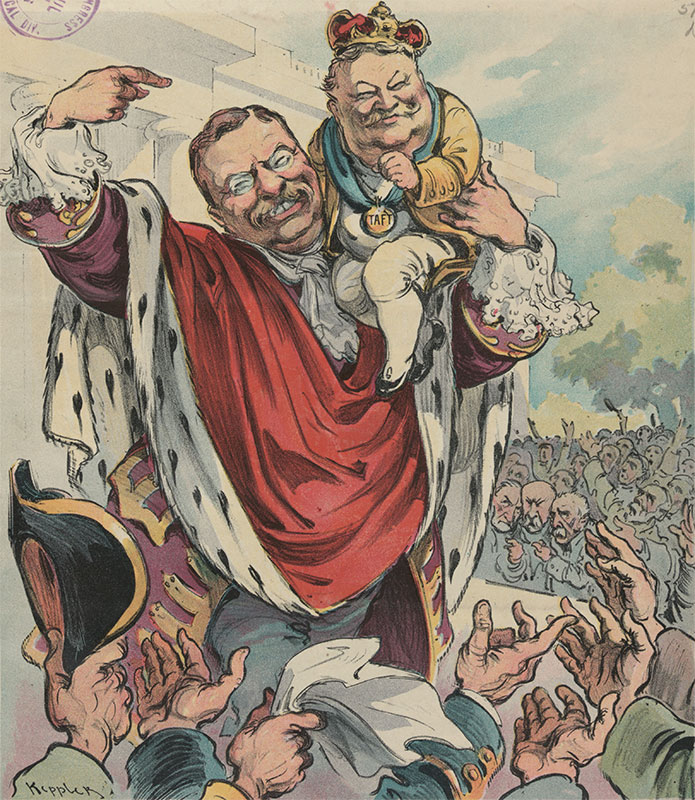
This political cartoon depicts Theodore Roosevelt, the 26th President of the United States, holding his successor, William Howard Taft, as if Taft were a child. The cartoon is from the early 1900s, around the time when Roosevelt was transitioning out of the presidency and Taft was coming into office.
The cartoon is a satirical comment on the relationship between Roosevelt and Taft, emphasizing Roosevelt's strong influence over Taft and suggesting that Taft's presidency might be heavily influenced by or indebted to Roosevelt.
Charia Hebdo
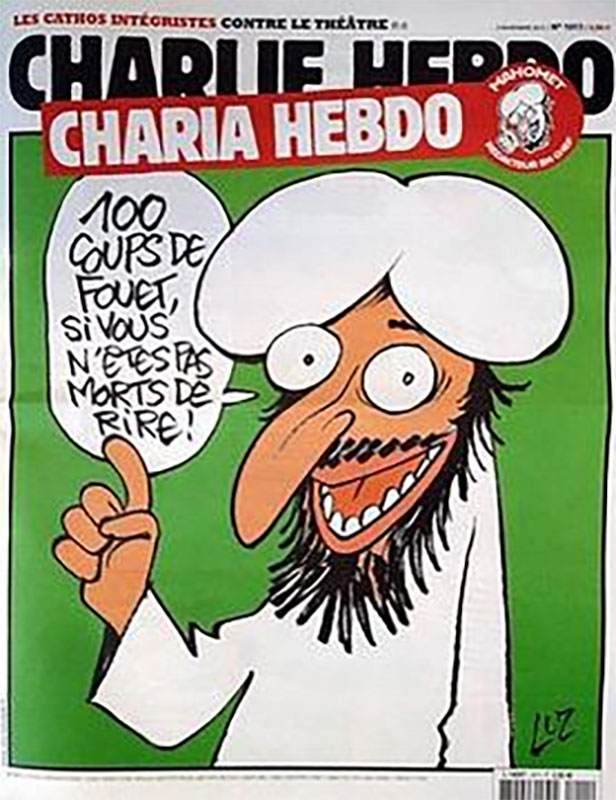
This image is a cover from the French satirical magazine Charlie Hebdo, which is known for its provocative cartoons. The cover in question shows a caricature of the Islamic prophet Muhammad with the caption "100 coups de fouet, si vous n'êtes pas morts de rire!" which translates to "100 lashes if you don't die of laughter!"
The caption sarcastically threatens severe punishment for failing to find the cartoon funny, highlighting the magazine's critique of draconian aspects of religious laws. In January 2015, the magazine's Paris office was attacked by gunmen offended by the cartoon, resulting in the deaths of 12 people. The attackers claimed to be "avenging" Muhammad.
GOP Elephant
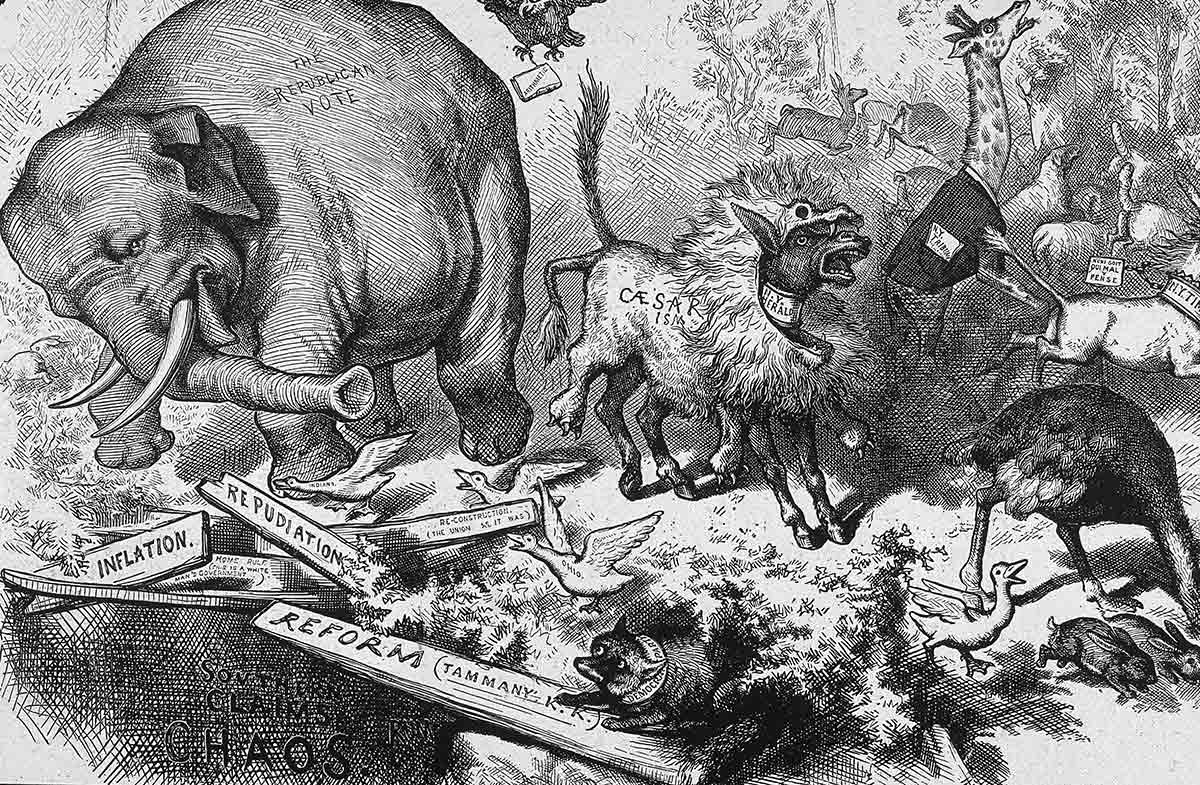
This political cartoon is titled "Third Term Panic" and was created by Thomas Nast, one of the most famous American political cartoonists of the 19th century. It features the first instance of the Republican party being portrayed as an elephant.
The primary message of the cartoon is the fear and potential chaos that would ensue if Ulysses S. Grant were to attempt to stay in power for a third term, thus undermining the democratic tradition of a two-term limit.
Monroe Doctrine
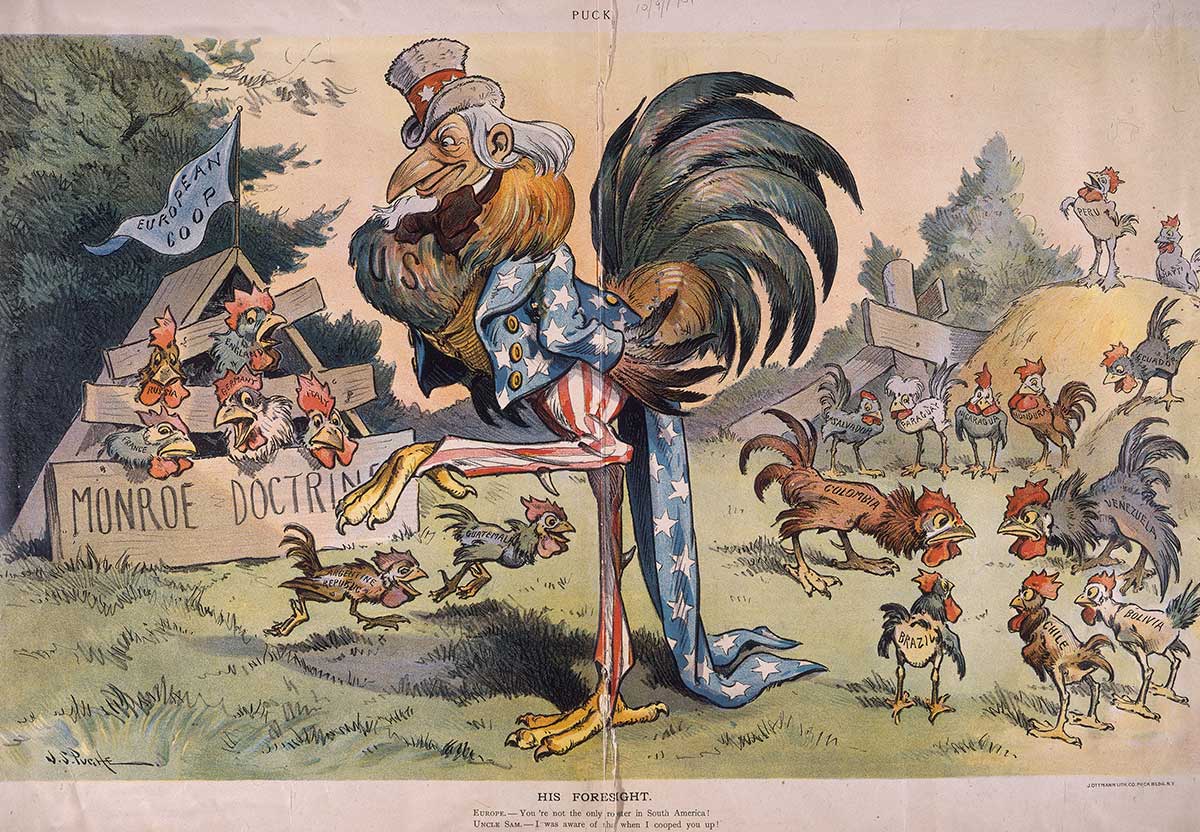
This political cartoon from "Puck" reflects the United States' foreign policy stance during the late 19th century, emphasizing the Monroe Doctrine's role in preventing European intervention in the Americas.
Uncle Sam, depicted as a rooster, symbolizes the protective and assertive nature of the U.S., overseeing both European powers and Latin American nations. The cartoon underscores the U.S.'s intent to maintain dominance and control over the Western Hemisphere, preventing external interference and asserting its influence in the region.
Corporate Greed
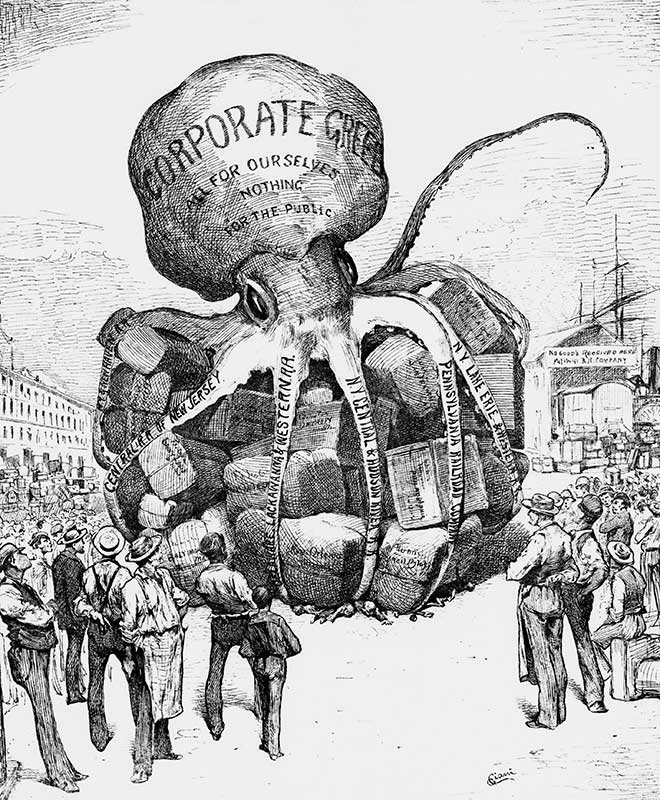
This cartoon, by G. Frederick Keller, depicts an octopus with the head labeled "CORPORATE GREED," its tentacles extending to various sectors and states, symbolizing the pervasive influence of monopolistic corporations, particularly railroads, during the late 19th century.
By depicting an octopus with tentacles reaching into various sectors and states, the cartoon emphasizes the extensive control and self-serving nature of these corporations, particularly in the railroad and telegraph industries. It calls attention to the need for regulatory reforms and government intervention to protect the public from corporate exploitation and ensure fair competition in the market.
His Philanthropic Friends

"In the Hands of His Philanthropic Friends" by C.J. Taylor is a satirical critique of the powerful influence monopolies and trusts had over the U.S. government during the Gilded Age. By depicting Uncle Sam being led by these corpulent figures, the cartoon highlights concerns about corporate greed and the need for regulatory reforms to protect the public interest.
By the late 19th century, there was a growing public outcry against the power of monopolies and trusts. Many people believed that these large corporations wielded too much influence and were corrupting the political system.
Trapeze Act
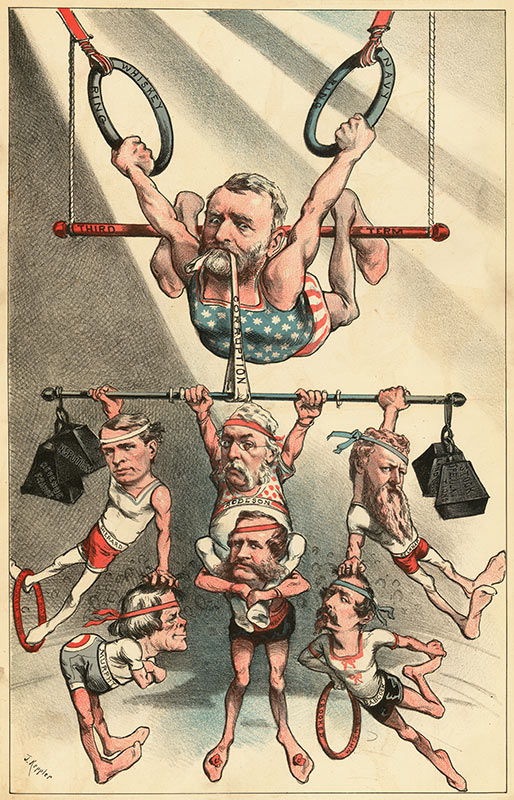
This political cartoon by Joseph Keppler uses gymnastic imagery to critique the political struggles and corruption of the late 19th century.
The gymnastic setting symbolizes the political acrobatics and strenuous efforts of politicians to gain and maintain power. Each figure's position and activity highlight their individual challenges and controversies.
 Author
Jack Robinson
Last Updated: March 11, 2025
Author
Jack Robinson
Last Updated: March 11, 2025